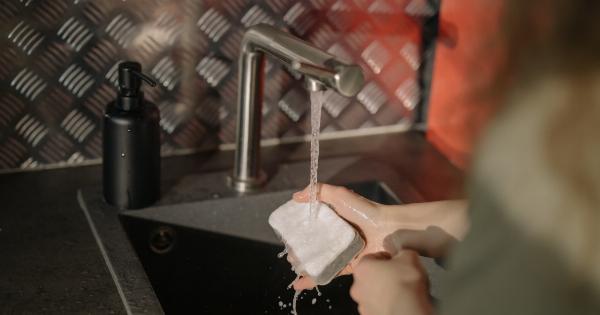Keeping your home clean and germ-free is important for the health and well-being of your family. While you may make an effort to regularly clean and disinfect common areas, there are often hidden spots that harbor bacteria and viruses.
In this article, we will explore the most germ-ridden areas of your home and provide tips on how to keep them clean.
1. Kitchen Sink
The kitchen sink may seem innocent enough, but it can harbor numerous germs and bacteria. Food particles and moisture create an ideal breeding ground for pathogens.
To keep your sink clean, wipe it down daily with a disinfectant solution and regularly clean the drain and garbage disposal.
2. Cutting Boards
As you prepare meals, cutting boards can become contaminated with bacteria from raw meat, fruits, and vegetables.
It’s crucial to have separate cutting boards for different types of food, and to clean them thoroughly with hot water and soap after each use. Consider using cutting boards made of non-porous materials, such as plastic, as they are easier to sanitize.
3. Toothbrush Holders
Many people overlook the hygiene of their toothbrush holders. These small, often damp containers can collect bacteria from the toothbrushes and airborne germs from the bathroom.
To keep your toothbrush holder germ-free, wash it with warm soapy water at least once a week or run it through the dishwasher.
4. TV Remote Controls
TV remotes are frequently touched by multiple people and seldom get cleaned. They can harbor bacteria and viruses, especially in households where someone is sick.
Regularly disinfect your remote controls with a sanitizing wipe or by using a cloth dampened with alcohol or disinfectant spray.
5. Bathroom Faucets
Faucets in your bathroom may come into contact with dirty hands after using the toilet or handling raw meat. Make sure to regularly clean and disinfect the handles and the surrounding area to prevent the spread of germs.
Consider using automatic sensor faucets to minimize contact and maintain better hygiene.
6. Computer Keyboards
If you work from home or spend a lot of time on your computer, your keyboard can become a breeding ground for bacteria. Food crumbs, sweat, and even cough or sneeze droplets can accumulate between the keys.
Use compressed air or a small vacuum cleaner to remove debris, and wipe down the keys with a disinfecting wipe or alcohol-soaked cloth.
7. Doorknobs
Doorknobs are touched daily by everyone in your household, including guests. They can easily transfer germs from one person to another.
Regularly disinfect all doorknobs in your home, especially during cold and flu season, to minimize the risk of spreading illness.
8. Pet Food Bowls
If you have pets, their food bowls can be a hotbed for germs. Bacteria from their mouths can contaminate the bowls, and if not cleaned properly, can lead to illness for both your furry friends and humans.
Wash pet food bowls with hot soapy water after each use, and consider stainless steel options as they are easier to sanitize.
9. Bedding
Your bedding may be a surprising source of germs. Dead skin cells, sweat, and bodily fluids can accumulate over time, providing a nourishing environment for bacteria and dust mites.
Wash your bed sheets, pillowcases, and blankets regularly in hot water to keep them clean and germ-free.
10. Cell Phones
Cell phones are often overlooked when it comes to cleaning, but they can harbor more bacteria than a toilet seat. Regularly wipe down your cell phone with a disinfectant wipe or alcohol-based solution.
Avoid using harsh chemicals that may damage the screen or other components.
Conclusion
Now that you are aware of the most germ-ridden areas in your home, it’s crucial to take proactive steps to keep them clean and minimize the risk of illness and infection.
Regularly clean and disinfect these areas, and encourage good hygiene practices throughout your household. Remember, a clean home is a healthier home.































